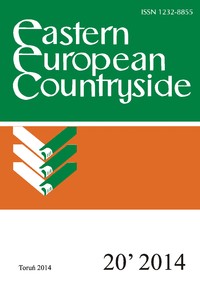
The Evolution of Family Farms in Poland: Present Time and the Weight of the Past
The author provides an analysis of family farming in Poland during the period 1990-2012, with special attention towards the close links of ownership and the operation of the farm by family members. The weight of various factors is given close attention, including the historical context of the farm, current conditions, and future intentions for the farm.
The historical context acknowledges and stresses the importance of the late abolition of serfdom made by the partitioning powers, various agricultural reforms during the period 1919-1944, and the period 1948-1989 (when family farming was incorporated into a deficient centrally planned economy). This latter period saw family farms developing specific mechanisms of functioning, which can be seen two decades later. Analysis of the period 1990-2012 is based on data of the Central Statistical Office, the present study, and other published materials. The data series includes individual farms of more than 1 ha, based on family labour.
Separated are two sub-periods: the post-communist transformation period from the early 1990s, and the period 2002-2012. The latter almost coincides with the accession to the EU. In the first period, the article outlines the process of creating duality in Polish agriculture. This describes a group of family farms where the household strongly reacted to the market and became larger and modernised (professional – 1/3 of the total) and small, extensive and producing mainly for own consumption (semi-subsistence – 2/3). In the second period, the functioning and transformation of households taking place under the CAP are examined. Modernisation is primarily seen on the professional farm. Specific mechanisms can be seen that provide fairly stable functioning of semisubsistence farms, independent of the market, with non-farm incomes and agricultural social security. These farms resisted collectivisation and stopped and hindered modernisation during the communist period, and this post-communist transformation now requires a doubly controlled modernisation process




